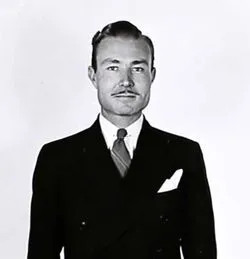Cathcart, Norman Carrel
Killed in Action 1944-04-02


Birth Date: 1903-April-26
Born: Nevada, USA
Son of James Alexander Cathcart and Martha (nee Carrel) Cathcart of San Mateo, California, USA
Home: Ottawa, Ontario
Enlistment:
Enlistment Date: Unknown
Service
RCAF
Unit
168 (HT) Sqn- Squadron
Base
RCAF Station Rockcliffe, Ontario
Rank
Flying Officer
Position
Flying Officer
Service Numbers
C/6248
Home
 Ottawa, Ontario
Ottawa, Ontario
Flying Officer Cathcart was an American citizen who, having previously done some civil flying in the USA, came to Canada to enlist in the RCAF in 1941
Flying Fortress Mk. III 9207
Transport 1944-April-02 to 1944-April-02
168 (HT) Sqn (RCAF) Prestwick, Scotland
168 Heavy Transport Squadron RCAF Rockcliffe. B-17 Flying Fortress aircraft 9207 took off from Prestwick, Scotland on the first leg of a trans-Atlantic mail flight to RCAF Station Rockcliffe, Ottawa, Ontario. The aircraft climbed steeply under full engine power, stalled, dropped the port wing and spun in, bursting into flames. All 5 members of the crew were killed. It was suspected that the mail, and possibly other cargo, shifted aft during the takeoff causing the aircraft to stall and crash. The aircraft was apparently heavier than normal and strapping to stop the cargo from shifting in flight had not yet been installed
Flying Officer N C Cathcart (USA)(RCAF), Flying Officer G T Gaunt (RCAF), Flying Officer H C McFadden (RCAF), Flying Officer J D Shanahan (RCAF) and Corporal E I Lavergne (RCAF) were all killed in action
This incident involved multiple aircraft:
- Flying Fortress Mk. III Serial: 9207
All the above aircraft in the above list are referenced in this report.
Flying Fortress 9207
Boeing Flying Fortress B-17

The Boeing B-17 Flying Fortress is a four-engined heavy bomber developed in the 1930s for the United States Army Air Corps (USAAC). Competing against Douglas and Martin for a contract to build 200 bombers, the Boeing entry (prototype Model 299/XB-17) outperformed both competitors and exceeded the Air Corps' performance specifications. Although Boeing lost the contract (to the Douglas B-18 Bolo) because the prototype crashed, the Air Corps ordered 13 more B-17s for further evaluation. From its introduction in 1938, the B-17 Flying Fortress evolved through numerous design advances, becoming the third-most produced bomber of all time, behind the four-engined Consolidated B-24 Liberator and the multirole, twin-engined Junkers Ju 88.
The B-17 was primarily employed by the USAAF in the daylight strategic bombing campaign of World War II against German industrial, military and civilian targets. The United States Eighth Air Force, based at many airfields in central, eastern and southern England, and the Fifteenth Air Force, based in Italy, complemented the RAF Bomber Command's night-time area bombing in the Combined Bomber Offensive to help secure air superiority over the cities, factories and battlefields of Western Europe in preparation for the invasion of France in 1944. The B-17 also participated to a lesser extent in the Pacific War, early in World War II, where it conducted raids against Japanese shipping and airfields.
From its prewar inception, the USAAC (by June 1941, the USAAF) promoted the aircraft as a strategic weapon; it was a relatively fast, high-flying, long-range bomber with heavy defensive armament at the expense of bombload. It developed a reputation for toughness based upon stories and photos of badly damaged B-17s safely returning to base. The B-17 dropped more bombs than any other U.S. aircraft in World War II. Of approximately 1.5 million tons of bombs dropped on Nazi Germany and its occupied territories by U.S. aircraft, over 640,000 tons were dropped from B-17s. In addition to its role as a bomber, the B-17 was also employed as a transport, antisubmarine aircraft, drone controller, and search-and-rescue aircraft.
The RCAF acquired six used B-17E and F aircraft from the United States in 1943. Stripped of all armament and armour, the aircraft were employed by the RCAF's No. 168 Squadron on a trans-Atlantic mail service vital to the morale of overseas forces. The aircraft were progressively modified and improved for service in this transport role, and some aircraft were subsequently stripped of paint and appeared in a polished, bare metal finish. No. 168 Squadron delivered more than two million pounds of mail between December 1943 and March 1946.
As of October 2019, nine aircraft remain airworthy, though none of them were ever flown in combat. Dozens more are in storage or on static display. The oldest of these is a D-series flown in combat in the Pacific on the first day of World War II.Wikipedia and RCAF
Flying Fortress 9207
Flying Fortress Mk. III 9207
Ex USAAF B-17E-BO, serial number 41-2581. Ordered on Purchase Order CA 000115. Taken on strength on 2 February 1944. Used by No. 168 Heavy Transport Squadron, Rockcliffe, for mail flights to Europe. Seen to climb steeply and stall and spin under full power, shortly after take off from Prestwick for Canada, on 2 April 1944. Destroyed by post impact fire, 5 fatalities. No official cause of crash found, but report theorizes that cargo shifted in flight shortly after take off. Aircraft did not have final version of RCAF developed mail restraints installed.1944-02-02 Taken on Strength 2022-02-07
1944-April-02 Accident: 168 Squadron Loc: Prestwick Scotland Names: Cathcart | Gaunt | Lavergne | Mcfadden | Shanahan
1944-05-03 Struck off Strength Struck off, after crashing at Prestwick, Scotland on 2 April 1944. See comments. 2019-08-20
 Canadian Virtual War Memorial
Canadian Virtual War Memorial Commonwealth War Graves Commission
Commonwealth War Graves Commission www.findagrave.com
www.findagrave.com Royal Air Force Serial and Image Database
Royal Air Force Serial and Image Database




 B.17 Flying Fortress
B.17 Flying Fortress Wikipedia B 17 Bomber
Wikipedia B 17 Bomber